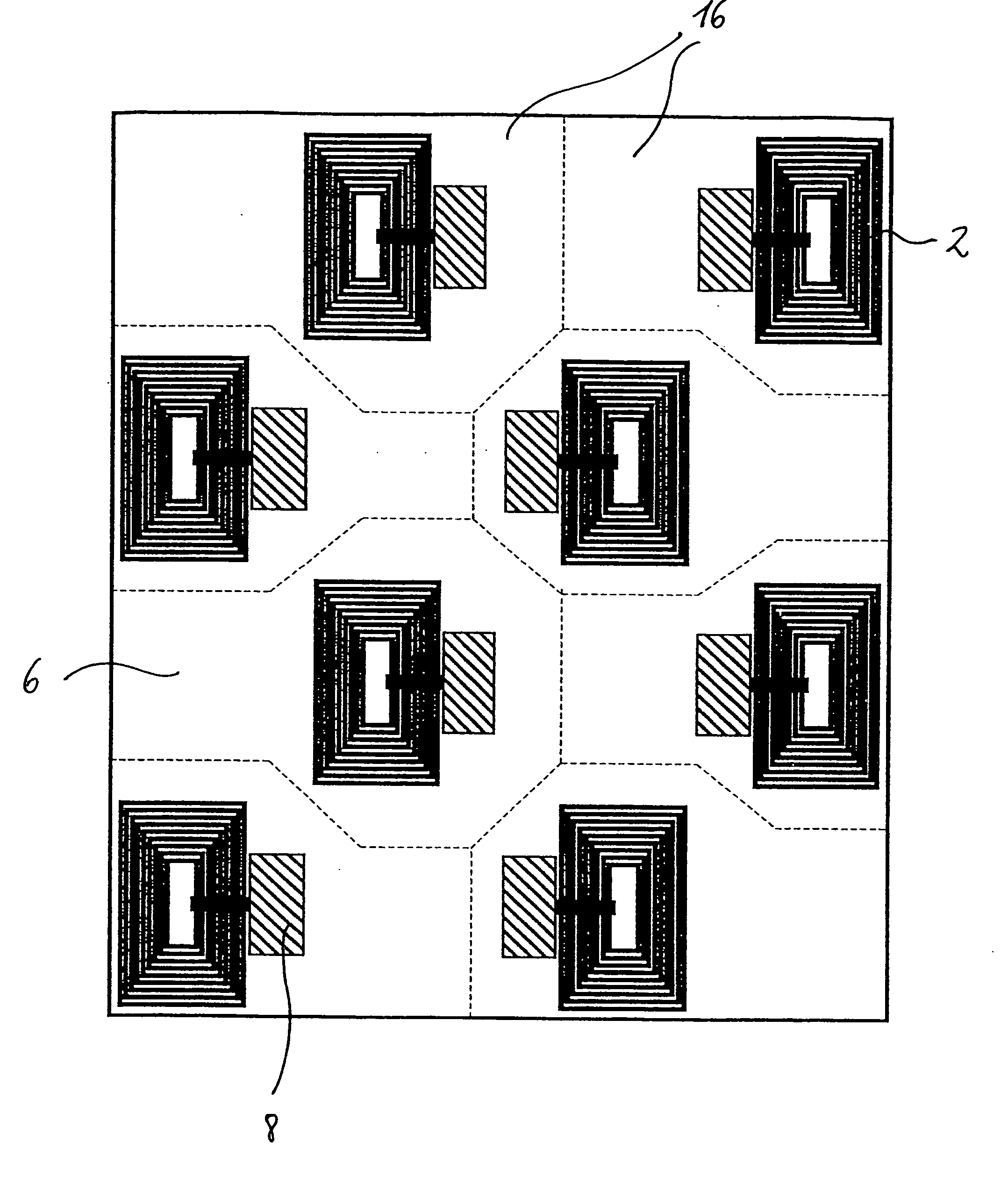Application of RFID labels
a technology of rfid labels and labels, applied in the field of application of rfid labels, can solve the problems of making the application step more difficult, and achieve the effect of easy application of the required parts to the package and minimal technical effor
- Summary
- Abstract
- Description
- Claims
- Application Information
AI Technical Summary
Benefits of technology
Problems solved by technology
Method used
Image
Examples
Embodiment Construction
[0015]As can be seen from FIG. 1, the antenna 2 and, not shown, a part of the oscillating circuit which are required for the proper functioning of an RFID label can be applied to a section 12 of the substrate 6 which is suitable for application by use of printing technology. According to the invention, this can be done by offset printing, or directly or indirectly by means of a letterpress plate. After printing, the only further step required is to attach the IC chip 8, which usually does not have a housing, by means of a bonding or soldering process to a section 14 of the substrate 6 which is suitable for mechanical application. It is advantageous to print a multitude of antennas 2 onto one substrate 6 (FIG. 2).
[0016]With respect to the design of the antenna, the following parameters are of interest: the inductance, the coil area, the ohmic (active) resistance, and the mutual capacitance between the windings. Deviations from the characteristic values can make it impossible for cont...
PUM
| Property | Measurement | Unit |
|---|---|---|
| conductive | aaaaa | aaaaa |
| length | aaaaa | aaaaa |
| power | aaaaa | aaaaa |
Abstract
Description
Claims
Application Information
 Login to View More
Login to View More - R&D
- Intellectual Property
- Life Sciences
- Materials
- Tech Scout
- Unparalleled Data Quality
- Higher Quality Content
- 60% Fewer Hallucinations
Browse by: Latest US Patents, China's latest patents, Technical Efficacy Thesaurus, Application Domain, Technology Topic, Popular Technical Reports.
© 2025 PatSnap. All rights reserved.Legal|Privacy policy|Modern Slavery Act Transparency Statement|Sitemap|About US| Contact US: help@patsnap.com



